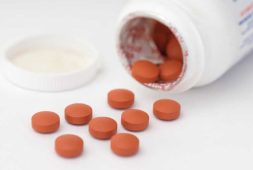
A new study suggests that people who take medications to help control their type 2 diabetes and cholesterol levels may actually be less likely to develop macular degeneration, which is a common eye disorder.
In some former smaller studies, researchers found that particular medications that are used to lower cholesterol, reduce inflammation, and control diabetes may also help lower the risk of the mentioned eye disease. However, the results have been mixed.
However, in a recent study published in the November 7 copy of the British Journal of Ophthalmology, scientists put together data from 14 European studies with around 39,000 participants. They looked at the association between macular degeneration and medication usage.
The study also shared that the participants that were taking cholesterol-lowering medications were found to be ’15 percent less likely to develop age-related macular degeneration (AMD), and individuals who used insulin or other medicines to manage type 2 diabetes had a 22 percent lower risk of developing this eye disease.’
Matthias Mauschitz, MD, PhD, from the department of ophthalmology at University Hospital Bonn in Germany and lead study author shared, “Our study indicates a potential beneficial effect of lipid-lowering drugs and anti-diabetic drug use on the prevalence of age-related macular degeneration across multiple European cohorts in patients who already take these drugs for other reasons.”
What researchers didn’t find was a link between other kinds of drugs and macular degeneration risk. Moreover, they also didn’t find a difference in the risk particularly for those with advanced cases of the eye disease when people took meds for high cholesterol or type 2 diabetes.
Limitations of the Study
As for one study limitation, the researchers lacked the proper data on how long people took their medications, the doses they took, and even the exact medications they took to manage their type 2 diabetes or high cholesterol. The study authors also relied on the participants’ prescription records, which they shared don’t always show how often people take their medications either.
Regardless, according to the researchers, the study findings provided new evidence that ‘metabolic processes in the body that play a role in blood sugar and cholesterol levels may also impact the development of age-related macular degeneration.’
What Exactly is AMD? And What are the Symptoms and Risk Factors?
Age-related macular degeneration is a condition that leads to central vision loss, or the difficulty focusing on things that are just ahead. It also tends to develop with age when a portion of the retina, called the macula, gets damaged.
According to the National Eye Institute (NEI), this condition is also the leading cause of vision loss in older adults. Although it doesn’t cause complete blindness, it can make it hard to see faces, while making it difficult to do a big variety of daily tasks, such as reading and driving.
One of the most common risk factors of AMD are a family history of age-related macular degeneration, advanced age, smoking, and being Caucasian. Also mentioned by the NEI, stopping smoking, having a healthy diet, regular exercise, and good management of cholesterol and blood pressure helps prevent this health condition.



